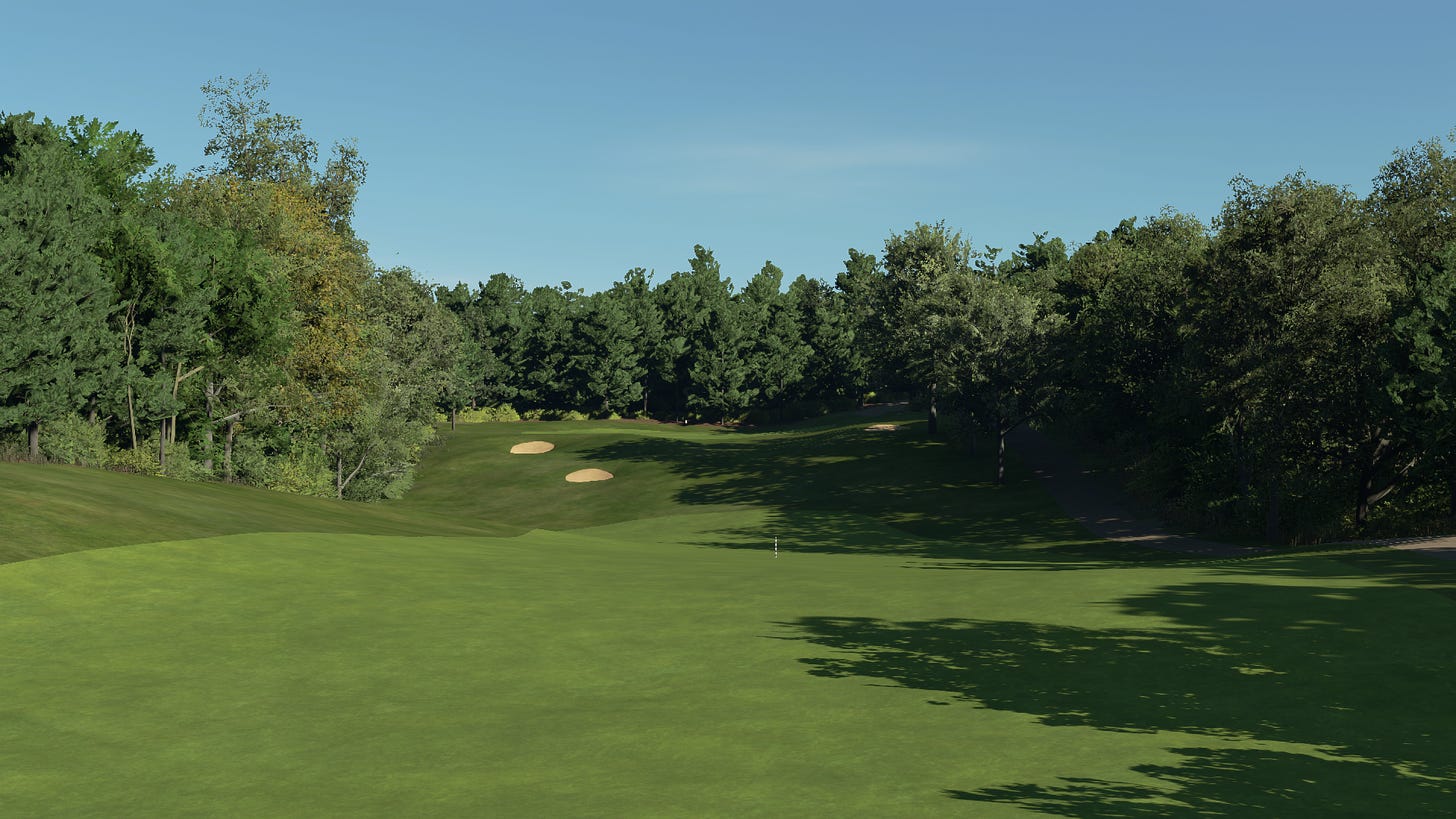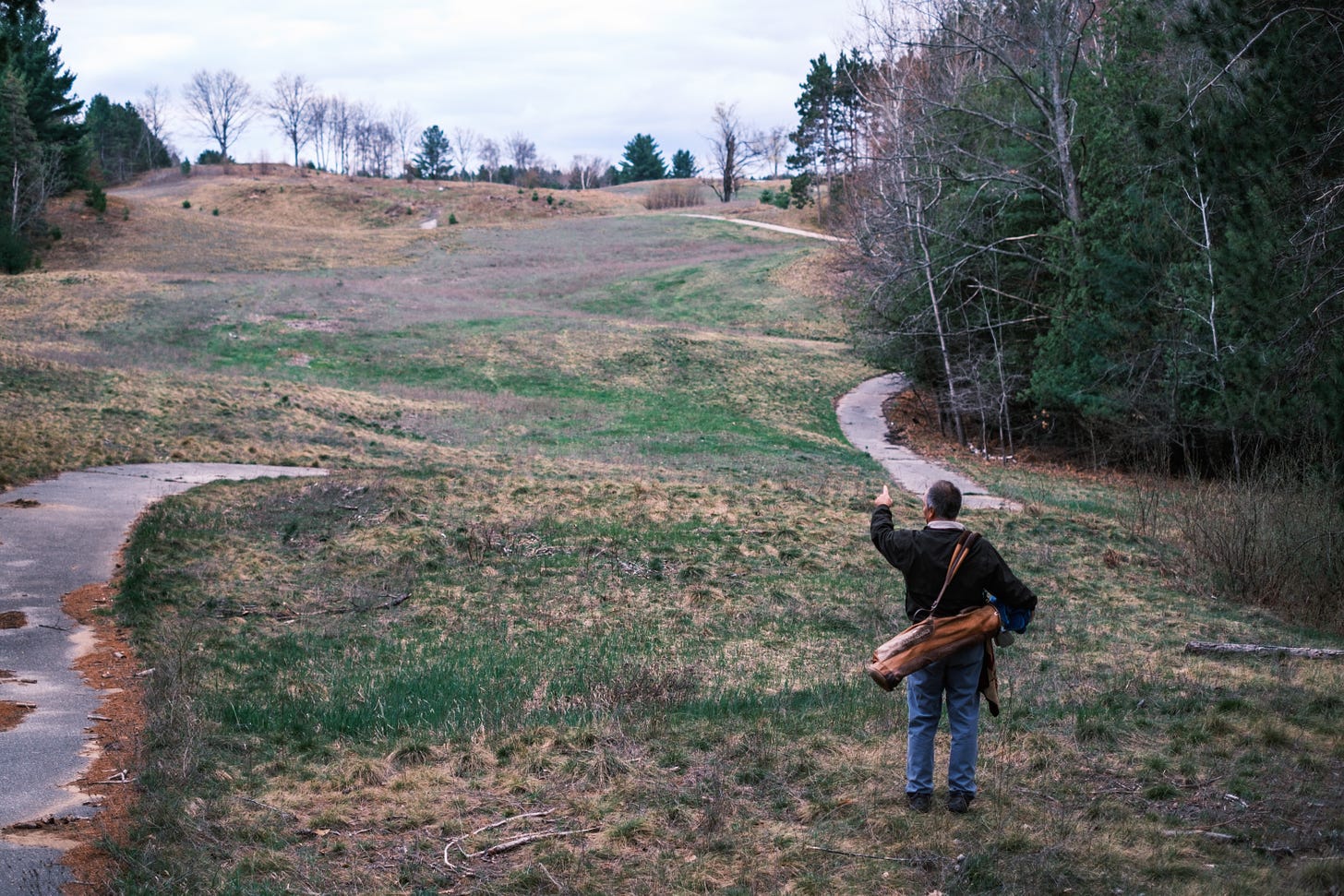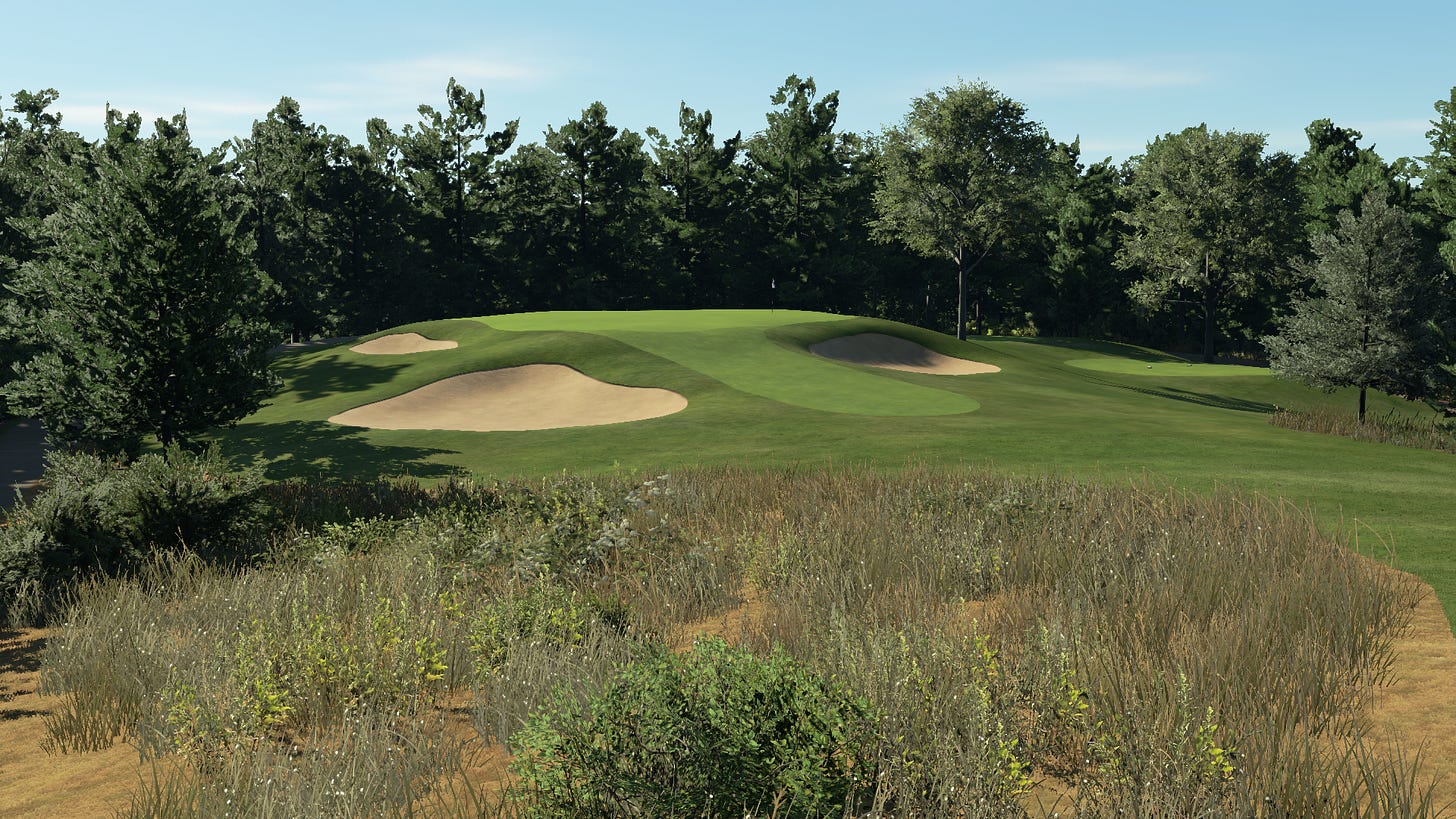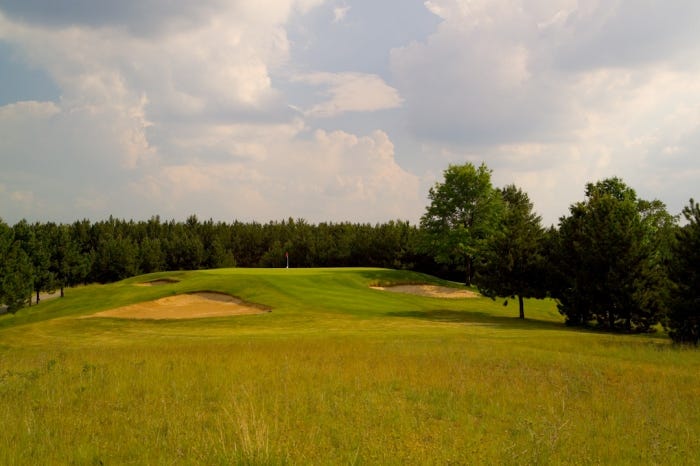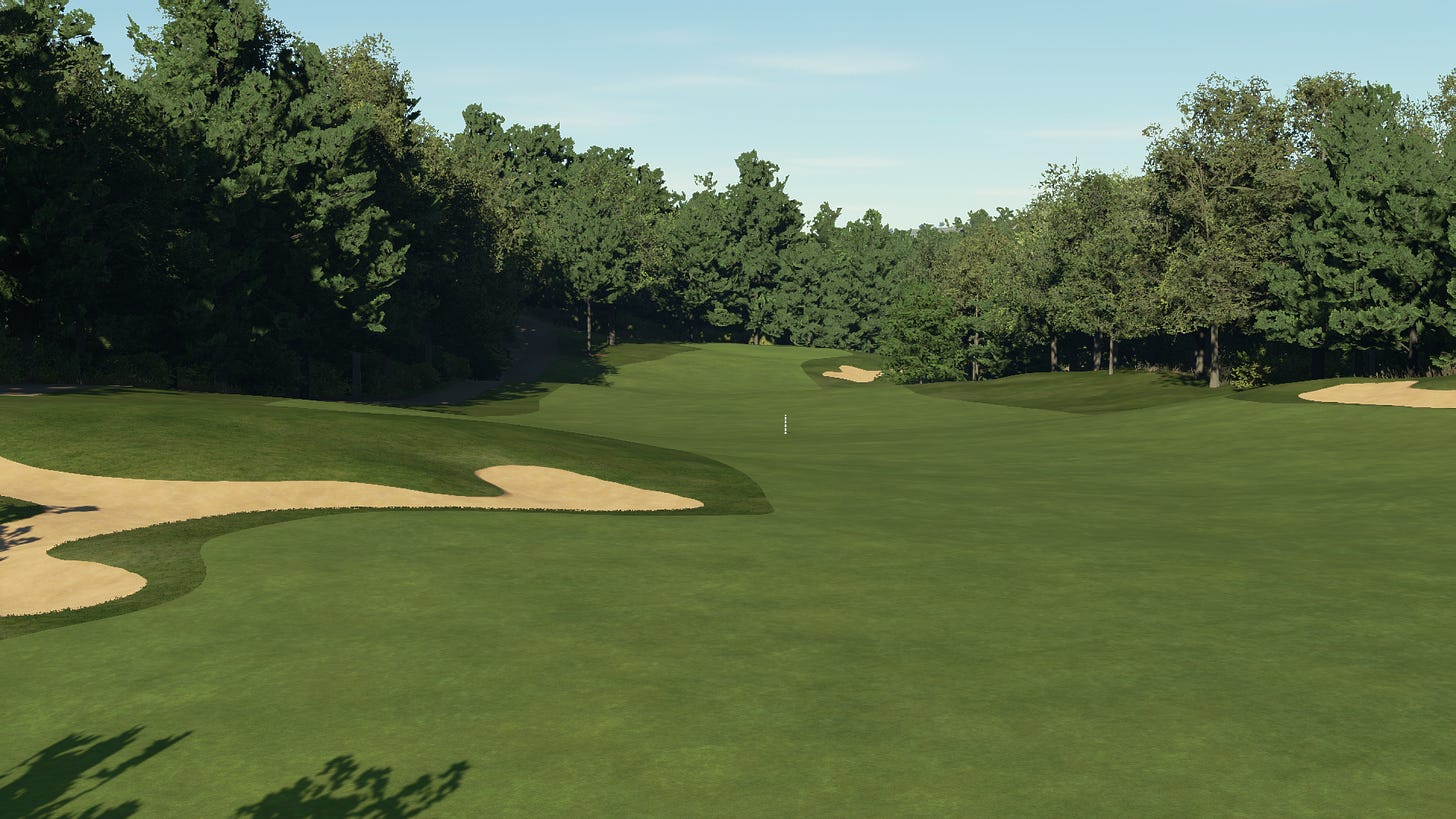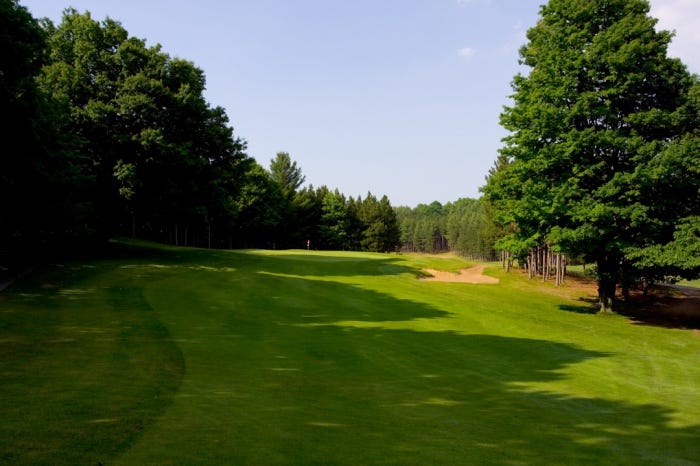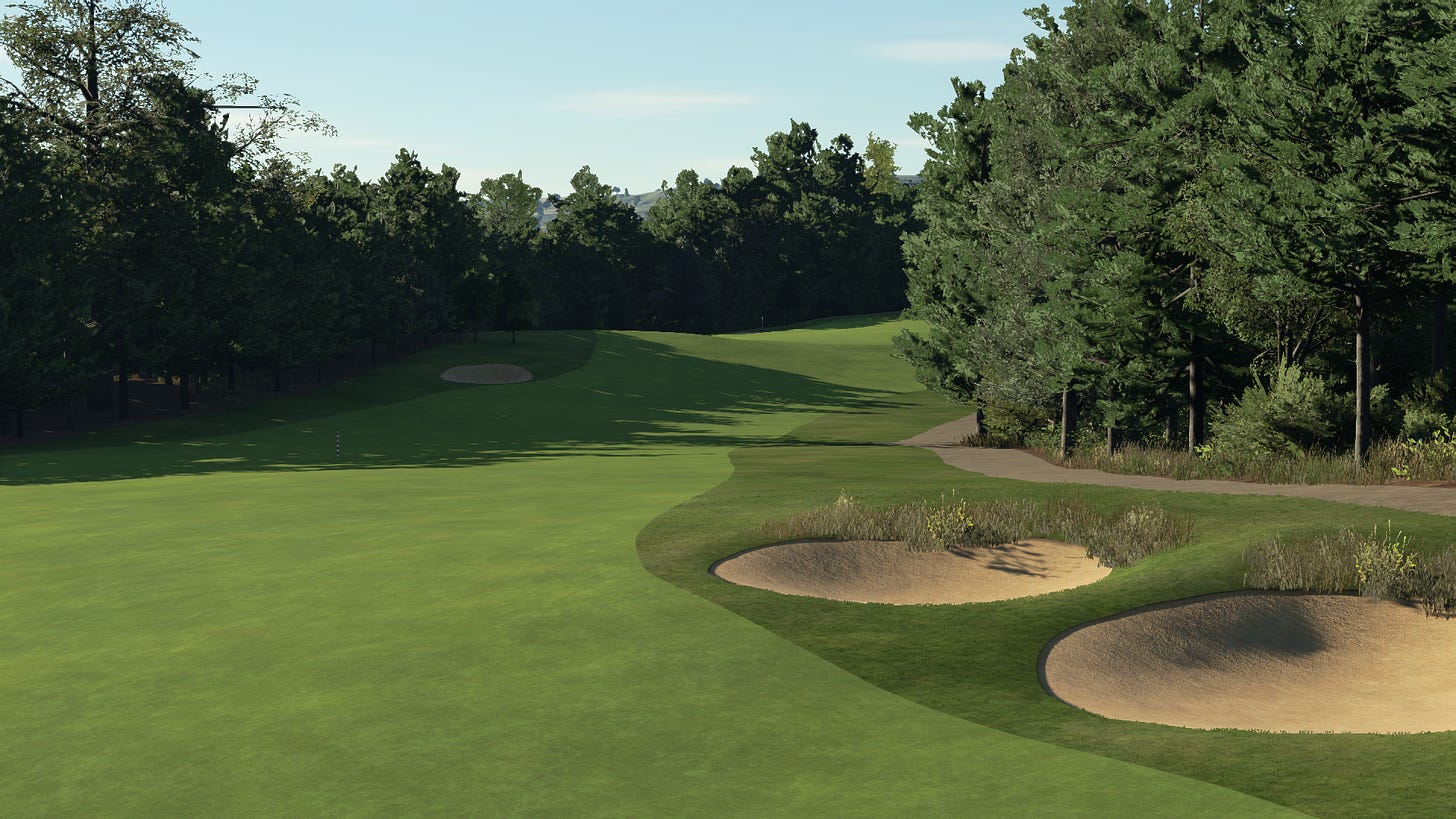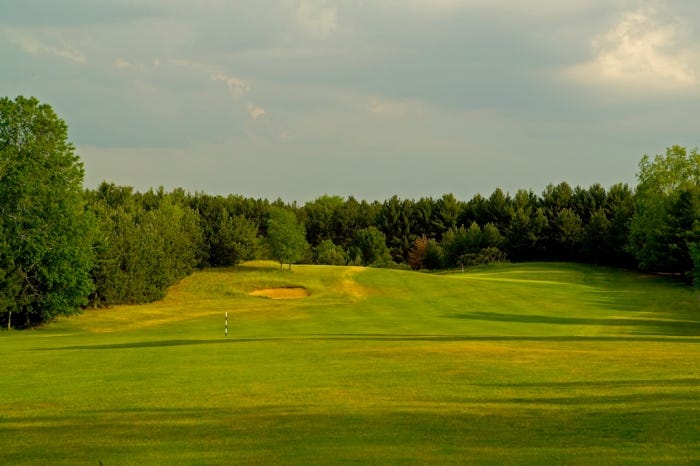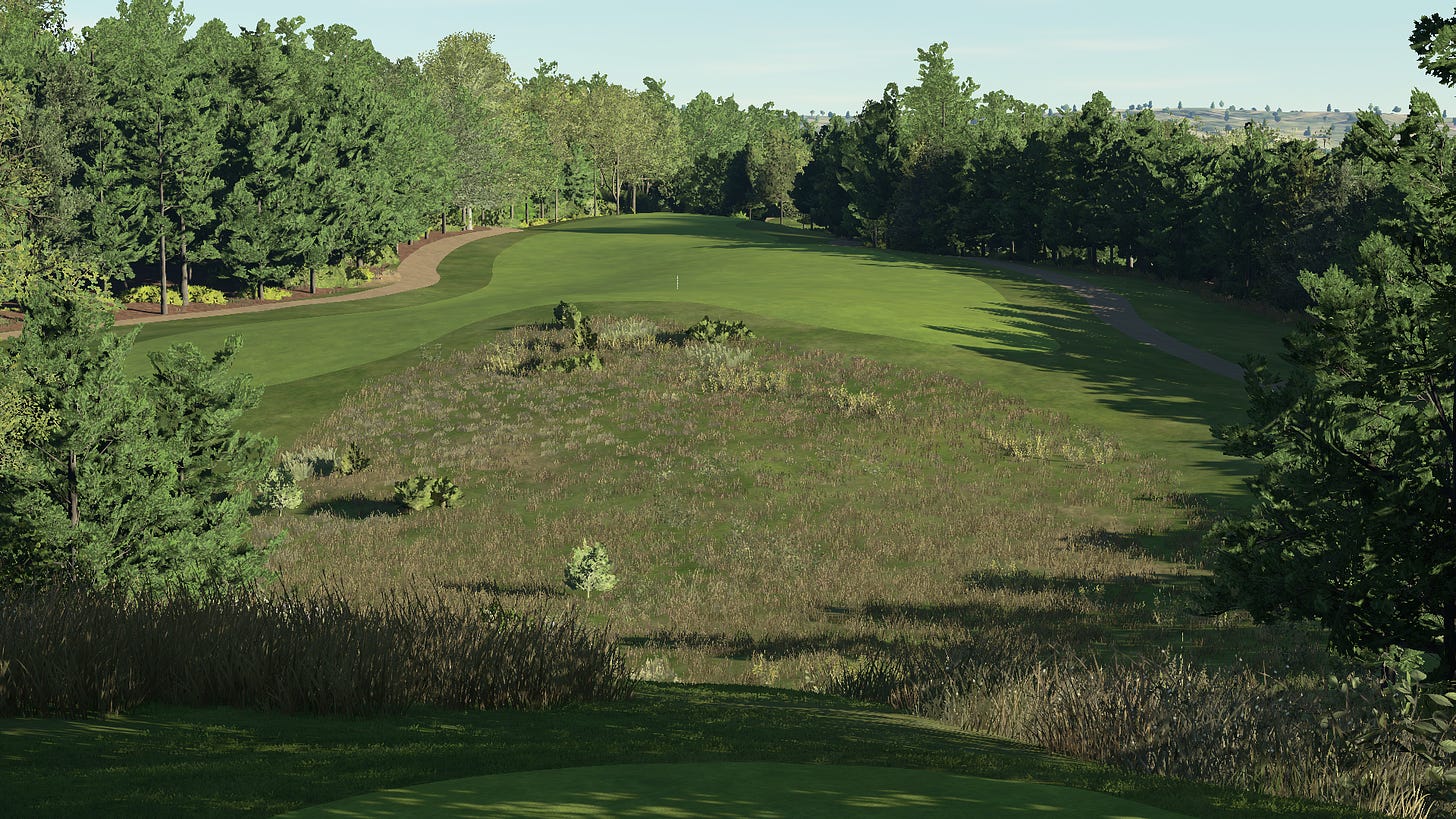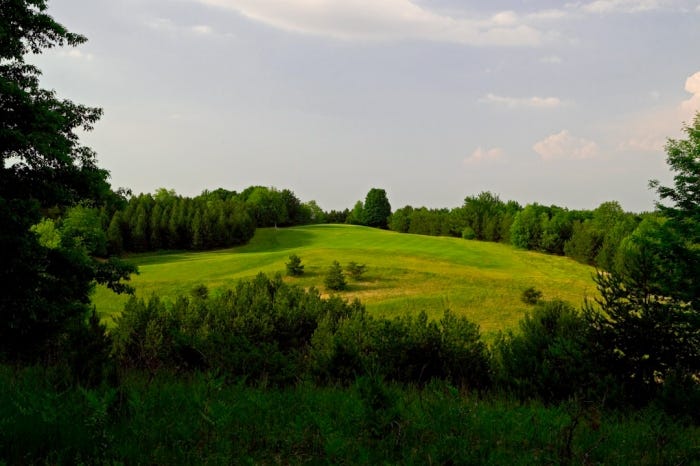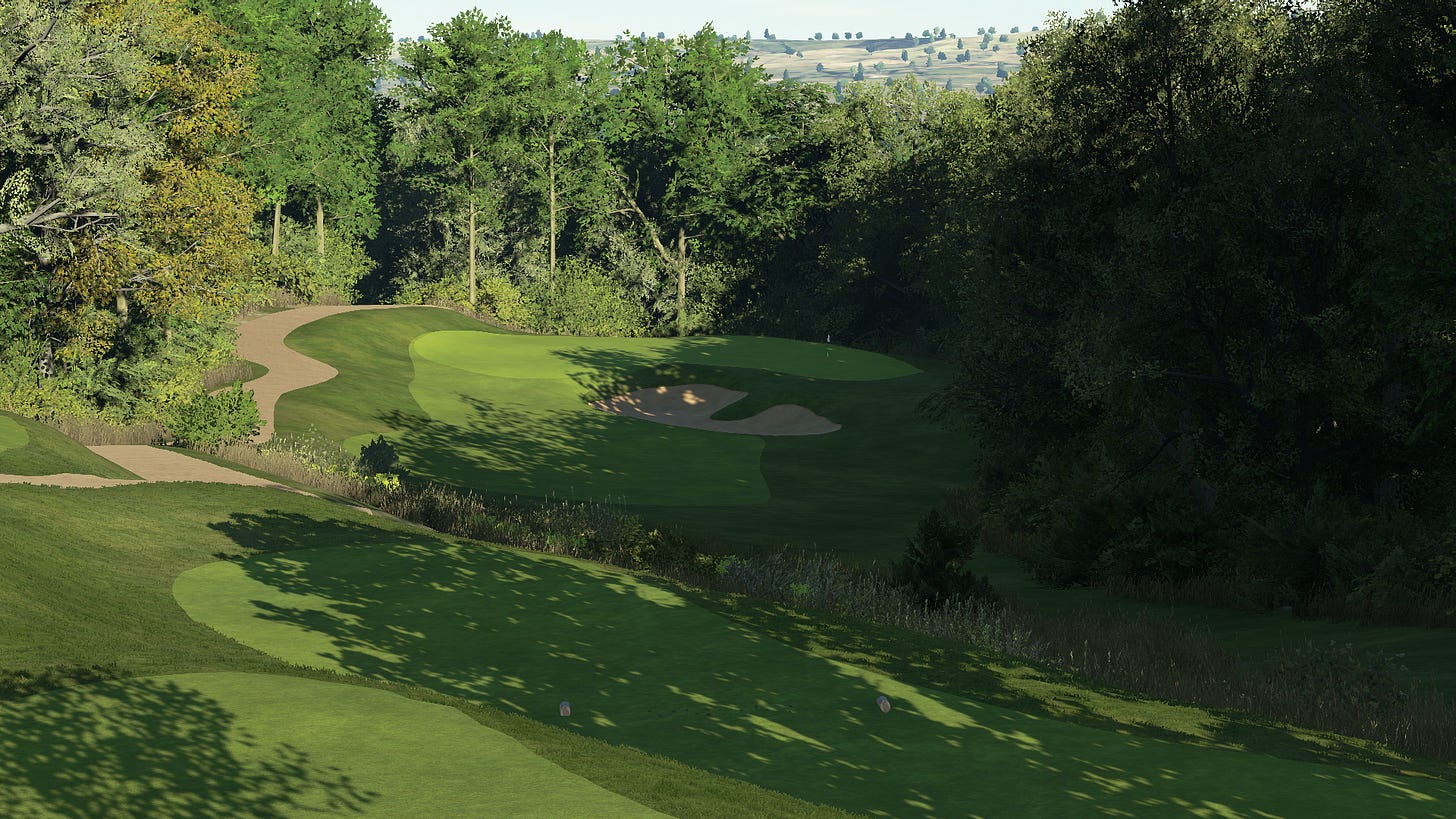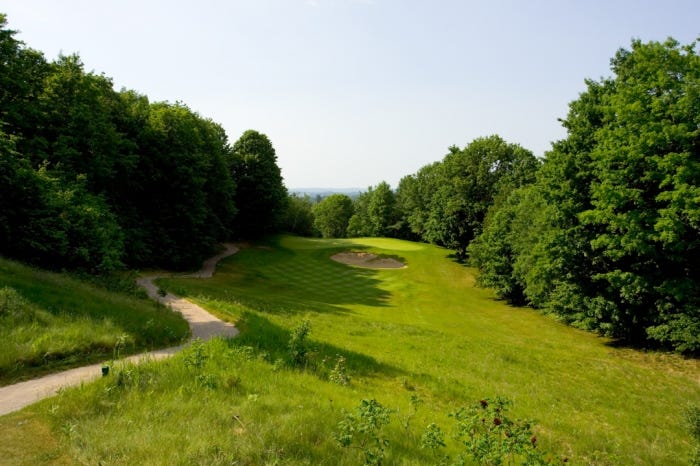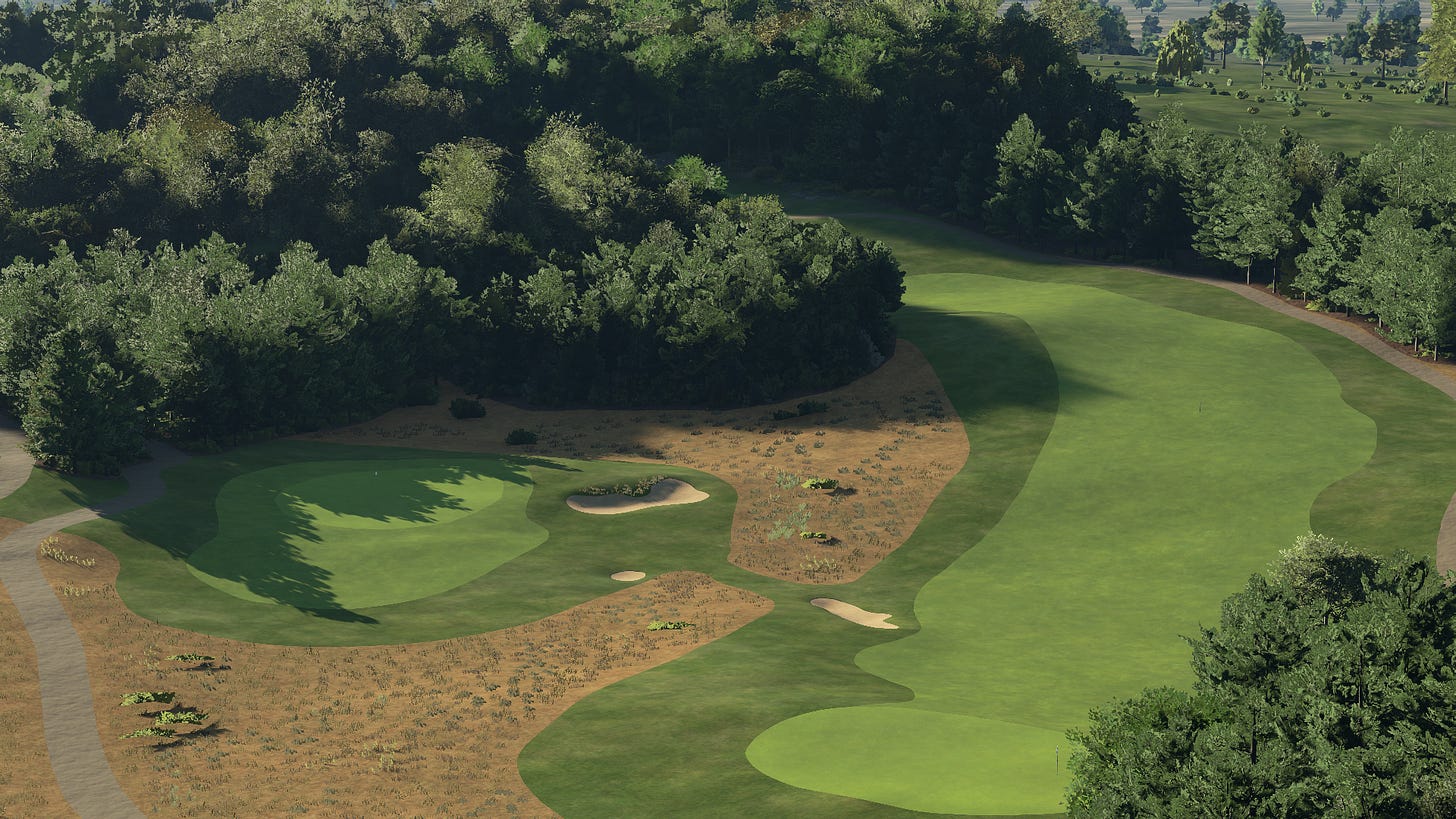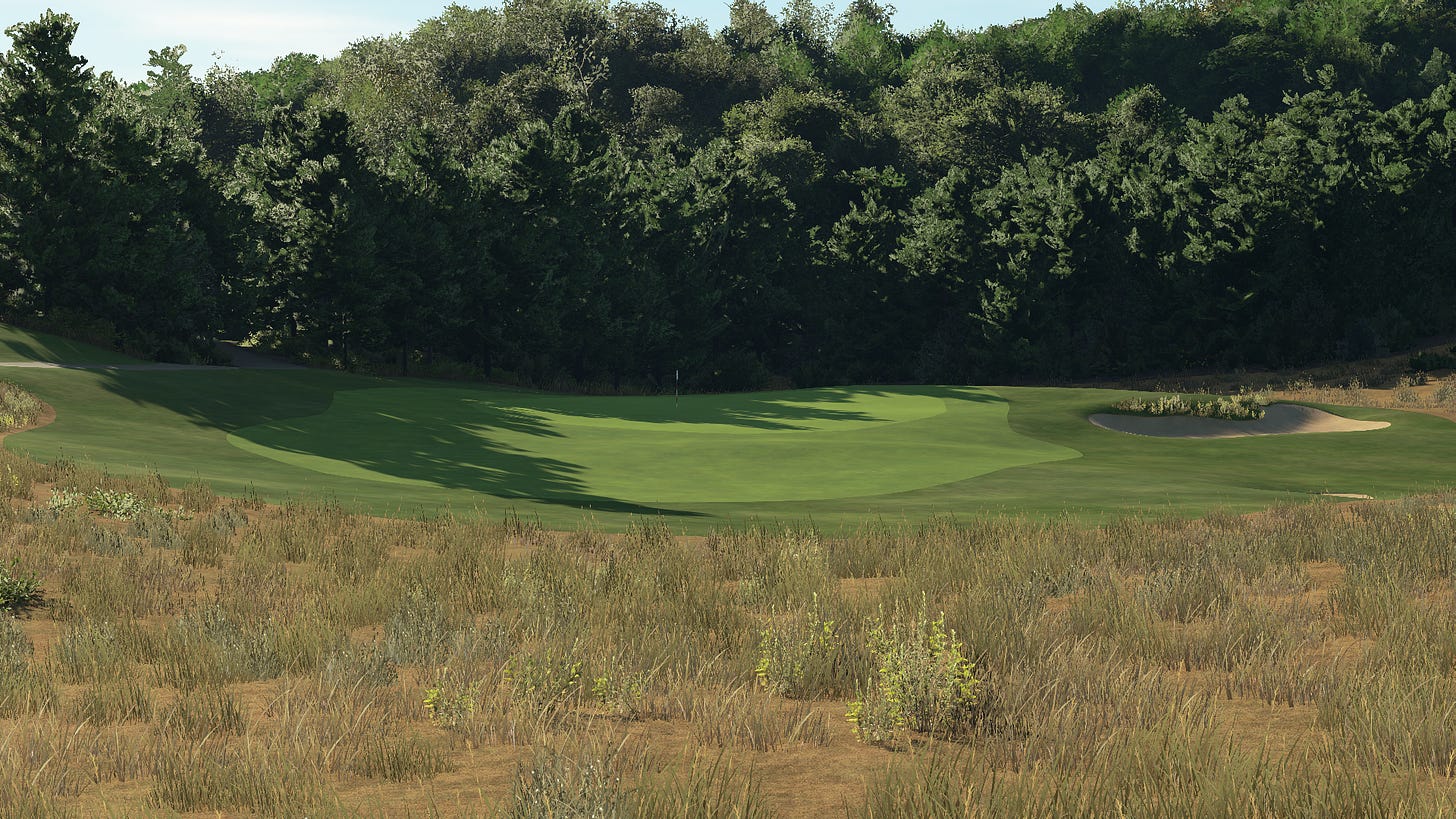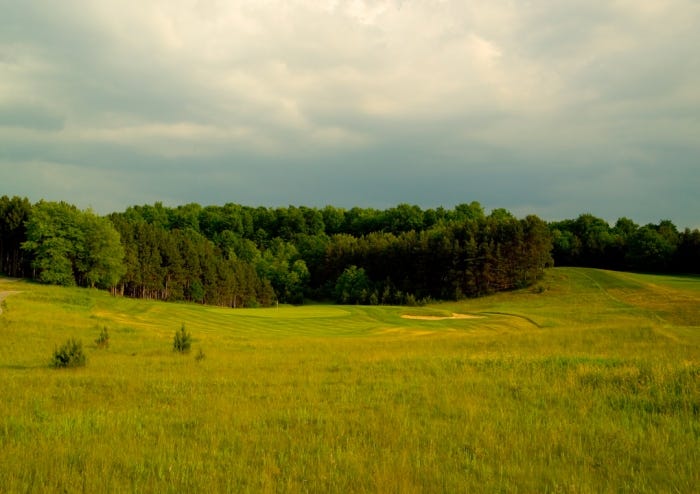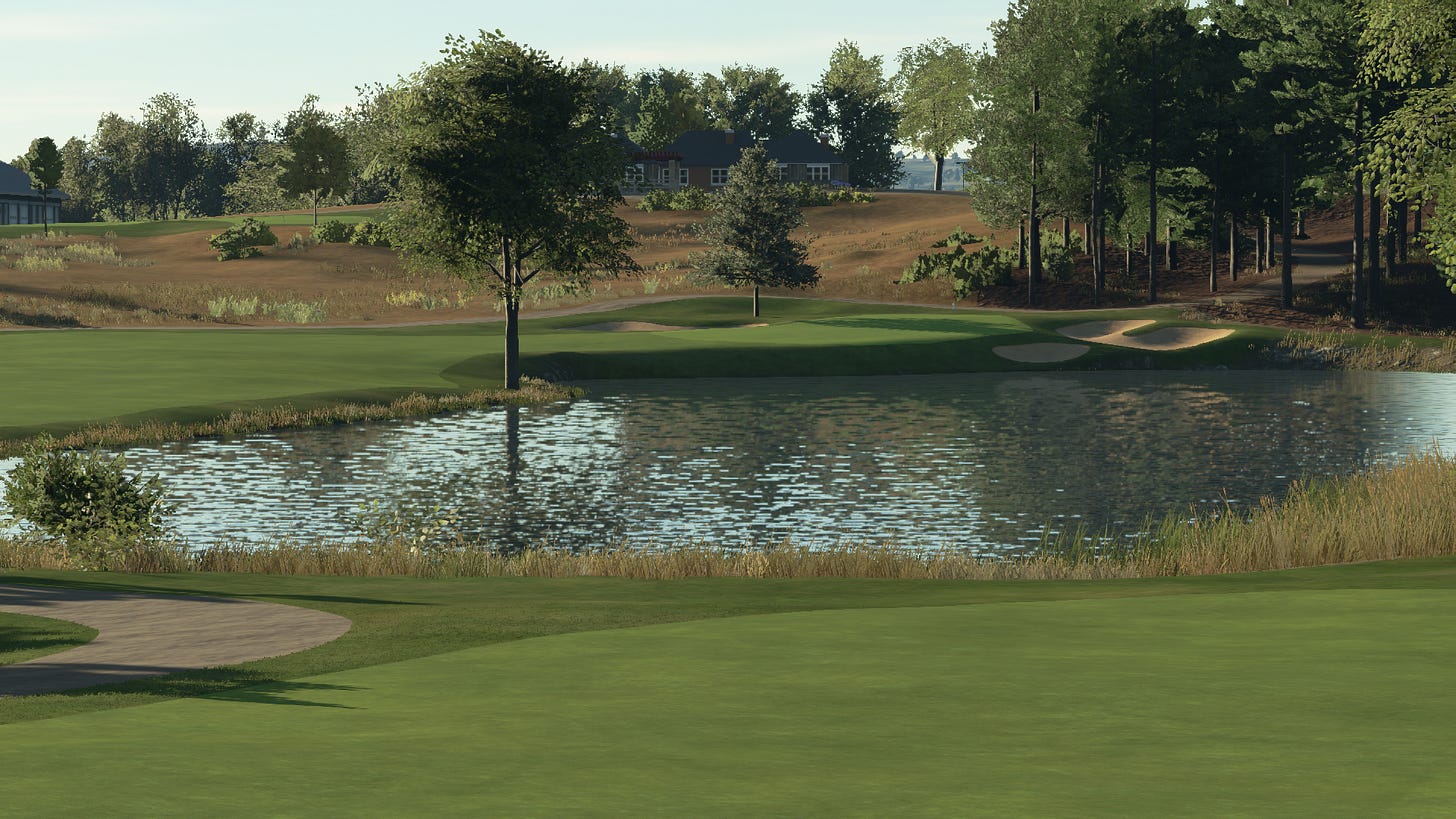This is part 3 in a 3-part series. If you missed the earlier articles, check out Part 1 and Part 2.
In a digital restoration project like this one, one of the things that you can’t replicate is the transition from hole to hole. Once your putt drops on one green, you are transported directly to the next tee box. In this case, the transition from the 9th green to the 10th tee could not be more stark. It’s a hike, but I’m envious of anyone in the past who got to make that walk.
The Back 9 - Hole 10
There are far fewer trees today on the back 9 than there were during the original course’s lifespan, so it will be interesting to see if the holes play differently on the newer course with more space to breathe. Either way, the land movement is the star. Much like the front 9, the first green on the back side is subtle, easing you into what is about to come in the next few holes.
Hole 11
I don’t know if this is the highest point at High Pointe (I think that distinction might belong to the 14th green), but it’s a cool little volcano par 3. From what I’ve found, it’s a tough green to hold and maybe even tougher to recover from if missed.
Hole 12
Playing the 12th hole feels a little like playing back down the 10th hole in reverse. There is a wicked green at the end, though. The green is almost two-tiered, but with a left tier and a right tier. Even with a short club, I feel like I wouldn’t even be remotely equipped with the skills needed to stick a ball on the higher left tier.
Hole 13
This is my favorite hole, and I hope it is preserved exactly in the new course. You play through a few different saddles to get to the green. And from there you just need to watch the video (~1:25 mark starts the demonstration of the 13th green):
I put several hours and many different attempts into trying to replicate that putt from the upper right portion of the green to a lower left pin. I shaved down some of the slopes to make it less severe, I slowed down the green speeds, I tried everything. Even still, I’ve only kept a ball on the green once or twice. If the pin is on the left, let’s just say you are better off missing the green left than hitting the right side of the green.
Hole 14
The plethora of teeing options here is intriguing, although based on aerial imagery through the years, it’s tough to tell if all of the tee boxes shown in the Gil Hanse drawing survived until the demise of the course. Let’s hope they are all included in the new rendition, because it’s a cool expanse to attack from several different angles and lengths.
Hole 15
Look, I’ve played a lot of downhill par 3 holes in Northern Michigan, especially in the Gaylord area. Usually the downhill tee shot is the feature. Here it’s the green. It’s definitely the green. The left side is steeply banked to feed shots in, while a large mound on the back right portion divides the middle section of the green from the front right section. Traversing from one section to the other can be an adventure.
Hole 16
Transitioning from the wooded South portion of the property back into the open territory of the front 9 had to be one of the biggest routing challenges for Doak. The 16th serves as the main transition hole, and without being able to play this in person, it’s tough for me to tell how well it works. In the digital version with a strong golfer and a camera that can see everything that lies ahead, it’s pretty easy to plop one down in the fairway around the bend of the trees.
Hole 17
I appreciate this hole. In one of the least eventful parts of the property, it’s simply a long iron or fairway wood par 3, with an open path and a slight slope on the front left to run shots in. Let’s see if you can do it.
Hole 18
In something I consumed at some point, I think Tom admitted this wasn’t the best hole. He may have said something along the lines of, “We had to get back to the clubhouse, there weren’t a lot of options.” Or something like that, don’t quote me. Anyways, the tee shot is definitely weird. It’s a less than driver shot where you have to control your distance; go too far and your view is cut off on the second shot. With that said, if you can end up where this picture is taken from, I like this green site and approach shot a lot, both aesthetically and strategically. Whatever Tom ends up doing with this hole (perhaps a short par 4?), I think there is a modicum of something to work with.
That concludes this virtual tour of the original High Pointe Golf Club. If you own the PGA 2K23 game on any platform, you can see it for yourself by searching for "High Pointe 2009 LiDAR”. If you don’t own PGA 2K23, you can follow along with a round here:
Hopefully at some point along the line, Tom gets a chance to watch the round. Having listened to him enough times on podcasts, I’m sure he would come back with notes on what isn’t exactly right, which would be great, because I’d love to make the experience even more authentic.




